Shooting in the backyard or at the local archery range during summer practice, wearing comfortable shorts and T-shirts, completely relaxed and undistracted, you might be inclined to believe you could never miss a deer at any reasonable range with modern archery gear. You step well away from the target during these carefree sessions, stretching your maximum effective range, confidently plunking arrows into pie-plate-sized groups at 40, 50 and even 60 yards. You have it wired. Or so you think…
But then the inconceivable occurs. You miss a shot at a season-making buck, calmly standing broadside at only 25 yards. How is this even possible? The good news is it happens to everyone eventually. The bad news is it happened to you, and you worked hard to earn that single shot opportunity.
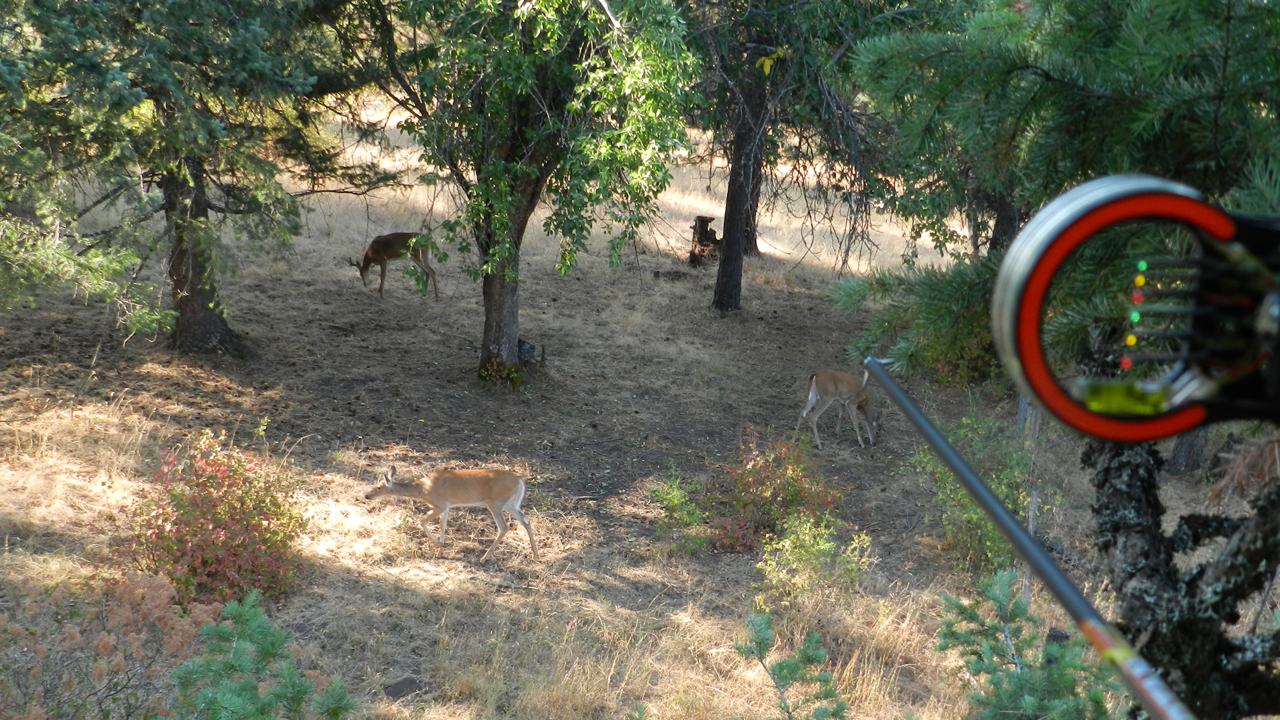
Use the down time on stand to envision and mentally rehearse likely shot scenarios around your stand. This leaves you better prepared for fleeting shot opportunities and creates a positive mental blueprint for success.
The easy answer is shooting a bow in a relaxed summer setting, while wearing comfortable togs, doesn’t exactly mirror the shot opportunities presented in the real world. Factors such as buck fever and target panic set well aside, some in-field shots are simply more problematic than others. Every bowhunter should also conduct pre-season dress rehearsals, including every piece of clothing/gear you’ll be wearing while bowhunting, to assure there are no binding or interference issues. That is the only way you can truly know for sure.
Otherwise here are bowhunting’s 4 toughest shot scenarios. They are some of the most frustrating stumbling blocks you’ll encounter this year, as well as some ideas on how to prevent them from ruining an entire season.
The Deep Freeze
One reoccurring problem for bowhunters – especially for the vast majority of American archers who pursue white-tailed deer from stationary treestands or blinds—is shooting bows with cold, stiff muscles. One of the season’s most anticipated events occurs during the November rut, when morning temperatures hover in the teens to 20s in many whitetail strongholds. Storm and cold fronts common during that period can also introduce added wind chill, swirling snow or cold-drizzle that, while sparking daytime deer movement, can also make sitting miserable.
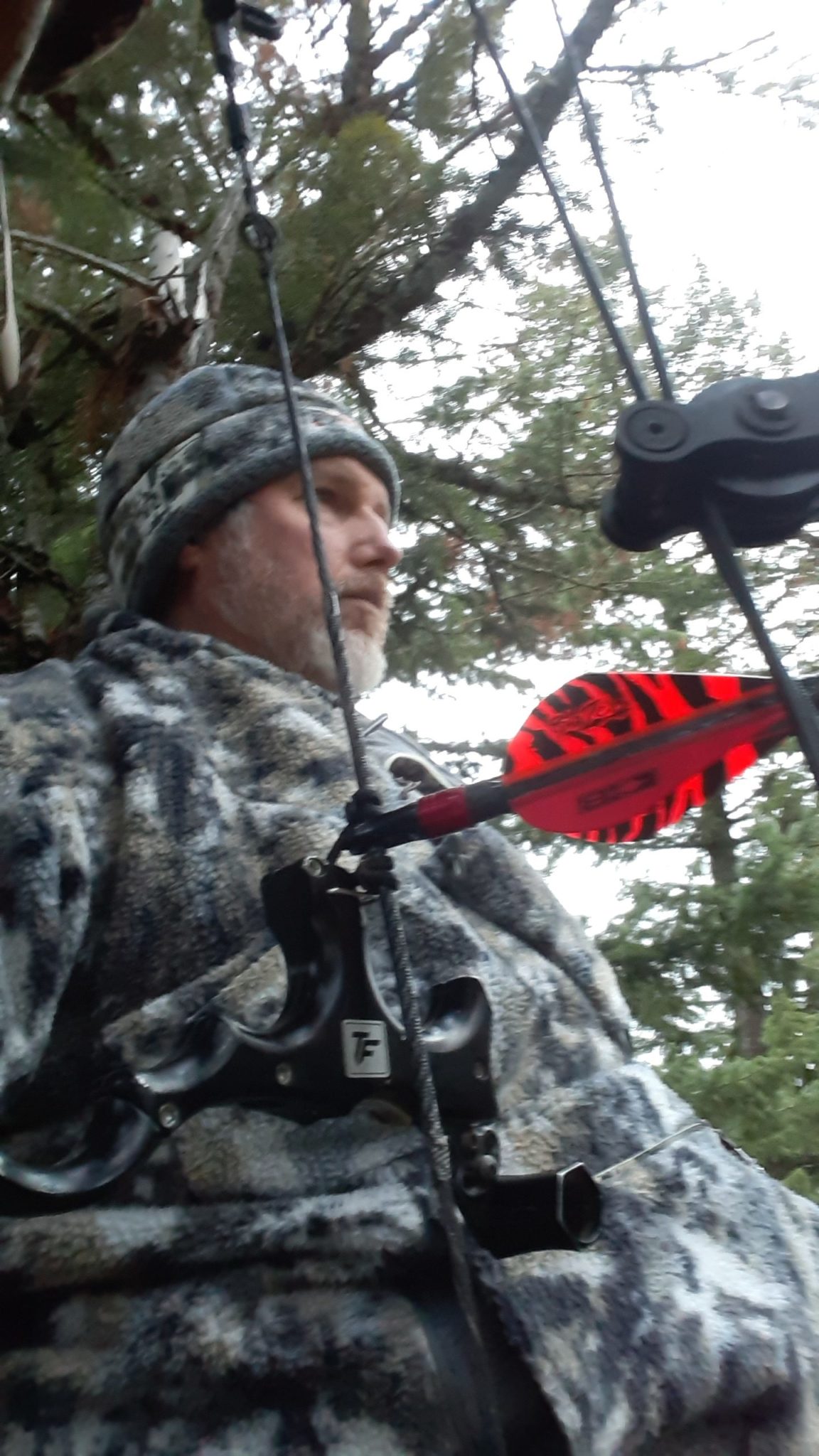
Allowing yourself to become hypothermic on stand does not lead to your best shooting. Staying warm is important. The author uses Sitka Gear’s Fanatic system to assure he’s ready to shoot when a big buck arrives.
The real problem is complete inactivity, as keeping attention-grabbing movement to a minimum is what stand-hunting success is all about. Adding even moderately-cold temperatures combined with inactivity quickly invites hypothermia or simply stiff muscles that can make pulling a bow uncomfortable. Creeping hypothermia also slows mental acumen, meaning rash decisions often result, especially when going from a bored-stiff idle to adrenaline-fueled red-line in the blink of an eye after the appearance of a bomber buck.
Prevention is the key to success in these situations. Staving off hypothermia and stiff muscles starts with eating well, loading up on carbohydrates and fats before climbing into a stand (classic bacon/sausage, eggs and pancakes), remaining well hydrated (sports drink are best) and avoiding circulation-restricting diuretics such as caffeine and nicotine (coffee, black tea and tobacco in all forms).
Layered clothing is also key, starting with moisture-wicking base layers, adding an insulating mid-layer (puffy jacket or vest) and finishing with a wind-turning, insulated parka and bibs. I use Sitka Gear’s CORE base layers, Kelvin insulating layer and Wind-Stopper, Primaloft-lined Fanatic outerwear to survive sub-zero north-Idaho mountain weather, for example. A warm, Wind-Stopper hat, insulated pack boots and hand muffler (combined with thin stretch gloves that won’t interfere with shooting) complete my kit. Feeling chills come on, I’ll conduct isometric exercises, flexing muscles and doing slow leg lifts to promote blood circulation.
The Surprise
Hand in hand with cold, stiff muscles experienced as a physical symptom after sudden appearances of game is the need to pull off quick, unplanned shots while mentally unprepared. That 0-to-60-in-3-second pace, as I’ve hinted, commonly leaves bowhunters mentally discombobulated and prone to bonehead blunders. An abrupt spike in adrenaline can cloud judgment, compounded by the physical difficulty of tugging into anchor with achy-stiff muscles. The mind creates a raging urgency that doesn’t actually exist, sparking nearly unbearable stress, and we hurry the shot to relieve that painful anxiety.
Sitting on stand can prove boringly tedious. Instead of allowing the mind to wander, use the down time on stand productively. To perform your best you must believe a deer will arrive beneath your stand at any moment and mentally prepare yourself for that eventuality. Prepare for likely shot opportunities well before the appearance of game by employing mental visualizations, running through various scenarios around stands and mentally planning how to react and what needs to be done to prepare for and execute a successful shot. Include detailed visualization of shot timing while avoiding detection, pre-shot checklists while at anchor and an arrow zipping into a chosen spot. Make these visualizations as detailed as possible, including what you’re hearing, smelling and feeling. The mind is an intricate instrument and has a difficult time distinguishing between detailed mental images and reality. Positive performance created in your mind can create a blueprint for real success during the moment of truth.
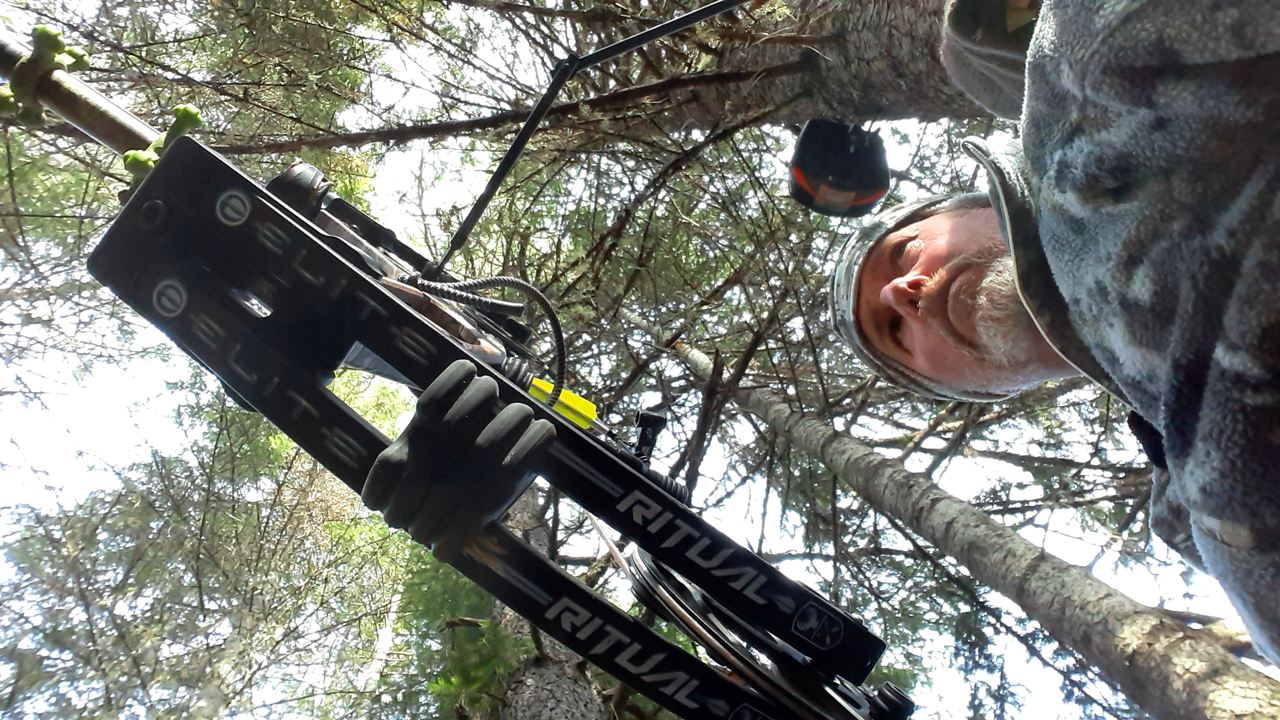
Stand sitting can prove boring; no two ways about it. Yet it’s important to remain on point throughout your sit, to believe a deer could appear at any moment. This leaves you mentally prepared to perform at peak performance.
Movers & Shakers
Another of bowhunting’s frequent dilemmas is the moving target; say a cruising rut-time buck rolling past your stand while scent-trailing a hot doe. Unless you’re an avid small-game hunter these are shots you just don’t practice. This problem really boils down to the decision of attempting to stop that animal for a standing shot, or taking a moving shot.
I’ve successfully executed many moving shots on whitetail bucks hurrying past my stands (including two of my best )—but then again, I’m also a rabid small-game hunter, so these opportunities aren’t exactly foreign to me. Making successful moving shots involves two important elements; intimate range (30 yards a safe maximum) and animals moving no faster than a determined amble.
Here is my rational for taking such shots, illustrated by two successful outcomes. The first involved a Kansas 150-inch 4×4 I’d called out of thick cover 100 yards away with a doe bleat. Cover was such that my stand was positioned only 8 feet off the ground in an elm that was a tad shaky but the only feasible option. The buck was only 19 yards away but walking fast, but I felt that stopping him with a bleat or mouth grunt would result in being immediately busted. I swung onto this shoulder and released, taking him through the heart. He toppled within sight.
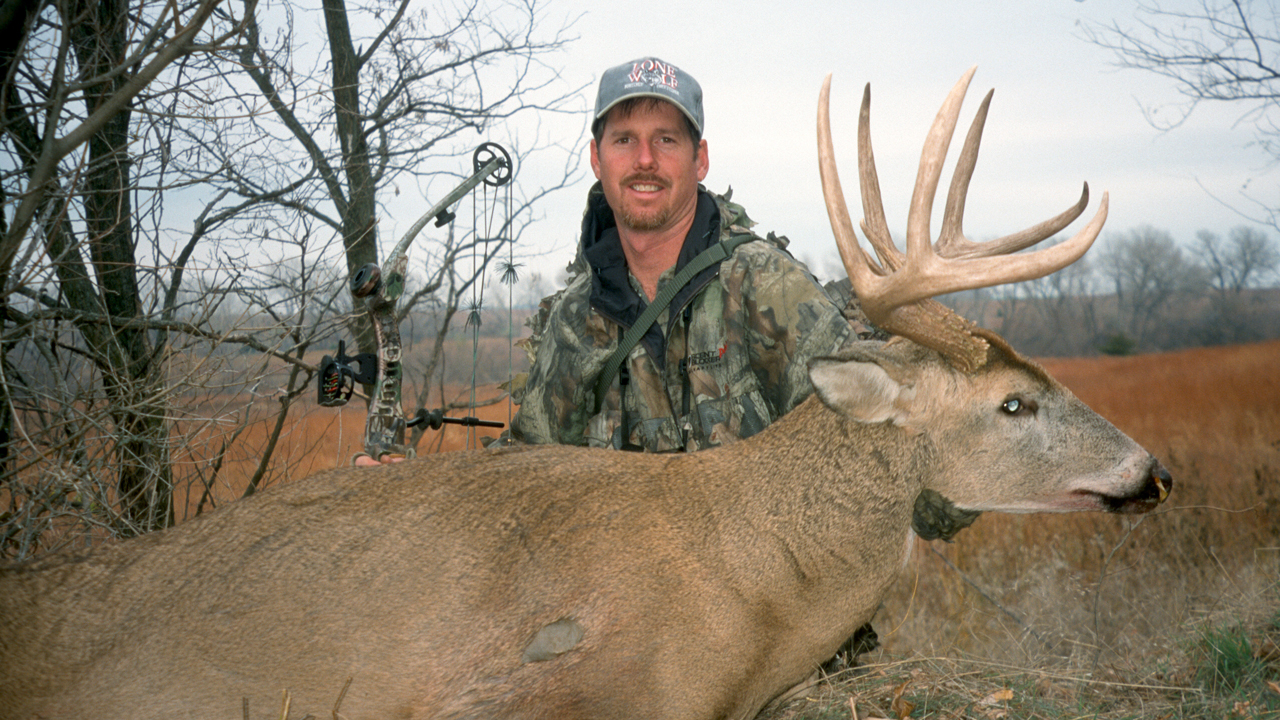
It is unlikely the author would have tagged this gorgeous Kansas 4×4 had he not been willing and able to take a moving shot. His stand was placed less than ideally and the buck was passing quickly in tight cover.
In another instance, my best Idaho buck to date was shot walking at 25 yards. I took that shot because our deer are hunted year round by mountain lions and wolves and exasperatingly spooky. Hitting full draw without spooking a deer is a challenge in itself. I believed producing any vocalization at all would send him into orbit. The shoulder constituted the aiming-point lead and that buck also fell within sight, taken through the heart.
On most occasions, though, I’ll attempt to stop moving animals for standing shots. A couple rules of thumb apply: always draw and snug into anchor with pins following the aiming point before producing any attention-grabbing vocalization (subtle mouth bleats/grunts work best). The shot is taken the moment the animal pauses, as waiting risks that animal pinpointing you and jumping the string on release. Second, be careful to time stopping vocalizations around shooting obstacles. For instance, it does no good to park a buck behind vital-blocking tree trunks or arrow-deflecting branches. Let common sense guide you, remembering big-game animals seldom stop on a dime, a step or two generally required to defeat forward momentum. Producing a mouth bleat or grunt just as a deer’s neck or shoulder emerges from behind cover—depending on velocity—might do the trick for instance.
Shots In The Dark
It’s no secret white-tailed deer, trophy bucks in pressured habitats especially, move most freely at the very edges of legal shooting light. Savvy bowhunters prepare for shooting in poor light. Now, I’m not advocating shooting outside legal hours in any way, shape or form. I’m saying that in whitetail hunting, heavy forest canopy, woolly skies and generous half-hour before and after sunrise/sunset shooting hours (some states require you to quit shooting at sunset) often present marginal shooting light. There is also the issue of aging eyes.
This is why I frequently venture out well after dinner on summer evenings to conduct pre-season shooting practice. You may discover that pins disappear after sunset, or that a larger peep aperture is required. You’ll likely discover targets appear farther away in poor light than during bright day. These are things to work out ahead of season, not while on stand.
Modern bow sights are getting brighter annually, fiber-optic-backed pins gathering ambient light and channeling it to pin tips. The longer the backing fibers, the brighter the aiming points, so look for designs with extended, aperture-wrapped or spooled fibers 2 to 3 feet long beyond the tip. Of course there are rheostat-controlled pin lights and even tritium-lit pins providing artificial illumination. TRUGLO’s tritium-powered TFO pins work well and are self contained, while pin lights should include a containment chamber to prevent blinding bleed-over. And assure such options are legal where you hunt (Idaho bowhunters aren’t allowed to use anything with batteries, tritium or glow-in-the-dark materials).
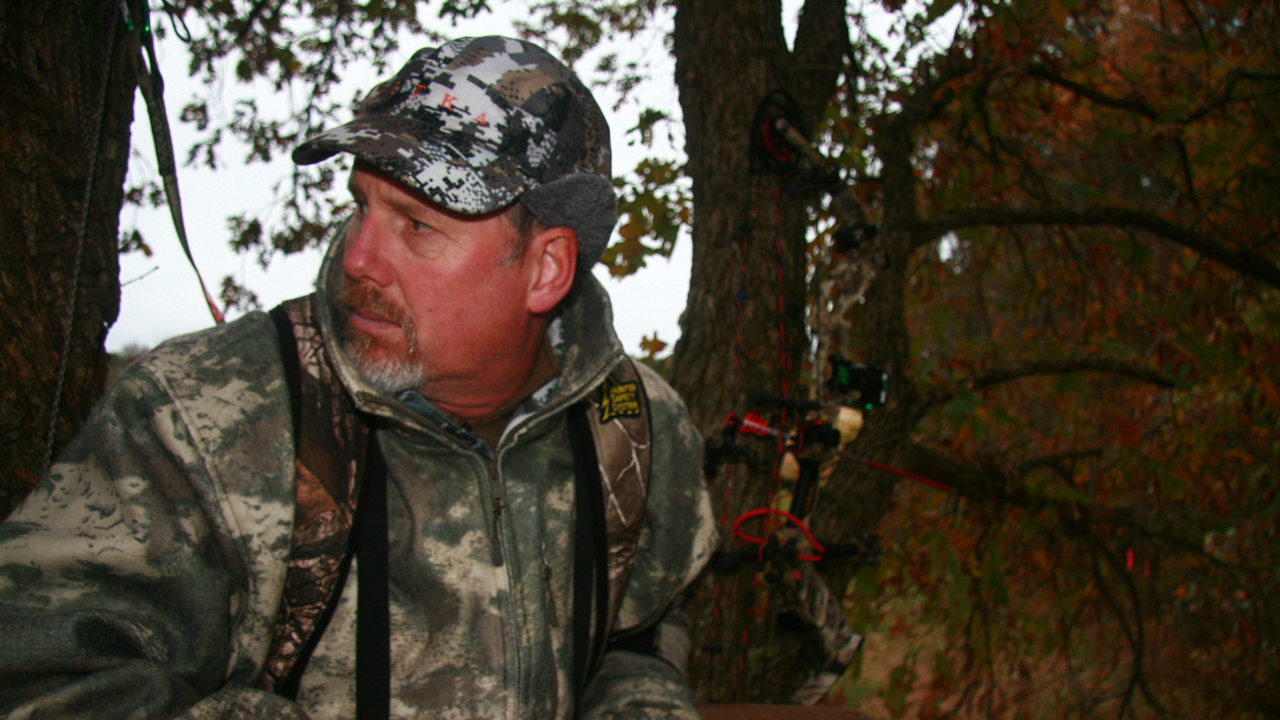
Heavy forest cover, overcast skies and aging eyes all contribute to the amount of shooting light needed for successful shooting. Maximizing low-light shooting abilities includes choosing bright fiber-optic sights and larger peeps.
Bowhunting’s 4 Toughest Shot Scenarios – Conclusion
Making the shot comes down to handling the emotions and adrenaline that’ll rage through your body when the opportunity comes your way. Will you be able to handle it? Be sure to keep the items mentioned above in mind this season as you find yourself climbing back in to the stand.
We want to hear from you. Comment below and let us know what scenario has given you the most trouble over the years.

 By
By 



